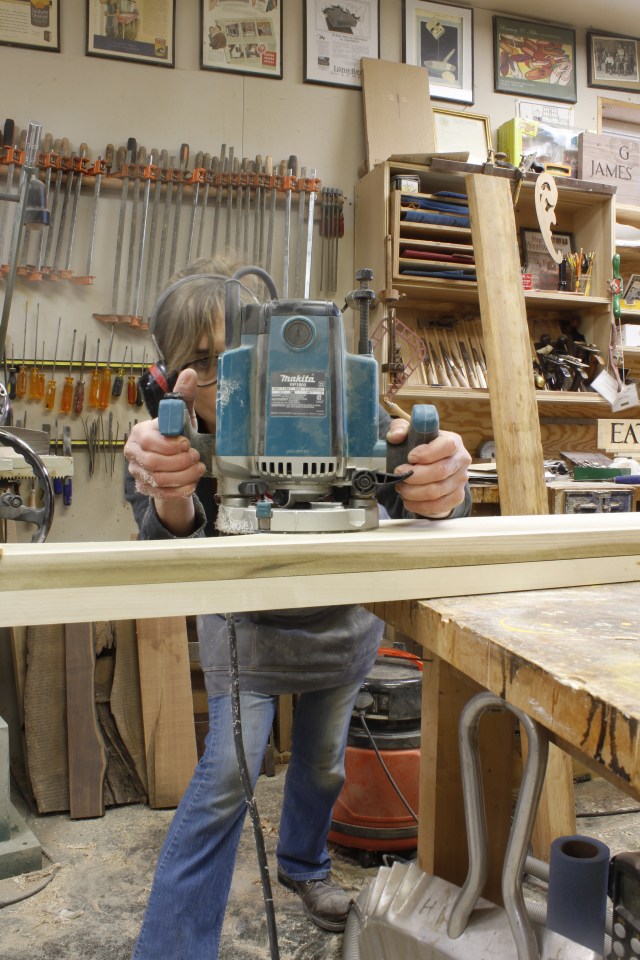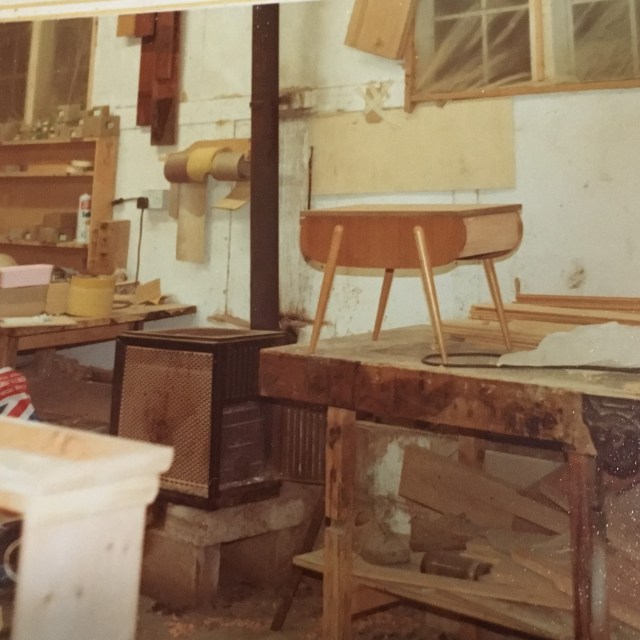
Every so often you hear from a reader who really gets where you’re coming from. This is not to say they’re the only ones who get it, just that they take the time to let you know. (An outstanding example is Dan Clausen’s scholarly essay about Lost Art Press.)
A recent example for me was the following review of my book English Arts & Crafts Furniture by @thewoodprof on Instagram:
A most welcome addition to my bookshelves, @nrhiller’s English Arts and Crafts is simply stunning. If you’ve read any of Nancy’s other work, you already know that she puts as much craftsmanship into her writing as she does into her furniture. And yet this book still pleasantly surprised me in a few ways:
1) The book has the most elegant endpaper of any on my woodworking shelves. An excellent departure from the monotony of the crowd.
2) While there are plans for a few designs inside, the book is not your typical project-by-project guide. Instead, it is an accessible and engaging conversation about the history, aesthetics, and philosophy of the Arts and Crafts movement, all beautifully interwoven with projects and techniques from some of Nancy’s most recent works.
3) Throughout, the pictures are beautifully human. Archival photos and museum pictures blend seamlessly with portraits of Nancy’s craftsmanship. But the in-process photos from her shop are my favorites. Nancy’s workspace looks humble, mortal. Her lighting is not always perfect. These “flaws” combine to bring the images back into dialogue with the text, to create a harmonious tone of real-world art and craft…. [emphasis added]
What spoke to me most was not the part about the endpapers (credit for those goes to Megan Fitzpatrick; the pattern, based on an original design by C.F.A. Voysey, is by David Berman of Trustworth Studios) or the bit about my interweaving of history with projects and techniques (that struck me as the best way to structure this book and underscore the relevance of particular ideals and individuals related to each of the projects—in other words, a no-brainer). It was the bit about the dialogue between the text and the process shots in my shop.
I have some hang-ups about my shop in this age of studiously curated imagery. Anyone who has visited will be aware that I issue a knee-jerk apology at the door. “It’s really a glorified garage,” I say, “but it’s by far the nicest shop I’ve had in my life.” Both statements are true.
It’s not the building that troubles me. Don’t get me wrong. I’d love to work in a converted church, timber-framed barn, or urban horse garage instead of my prosaic pole-barn covered in T 1-11 siding, but none of those is presently an option. My compulsive apology is more a response to the state of affairs inside. Partially finished pieces from magazine shoots (so close to being usable! I can’t bear to cut them up for kindling) preclude anything approaching a Zen vista. Routers and other small machines are stored on open shelves, as are tool bags and boxes, shims, levels, and other equipment for onsite installation work. On the wall above the chop saw are drywall and painting supplies; I’m no drywaller or painter, but some of my built-in jobs require minor drywall repair and painting, and it’s simpler for my clients, as well as more affordable, if I just take care of the whole shebang and save them the bother of choreographing multiple tradespersons. On another wall, more open shelves house boxes of screws, nails, washers, and other fasteners.
Someday I will finish the magazine projects and make doors for all those open shelves, streamlining the visuals and enhancing dust control. (Maybe.)
I am aware of what’s behind my compulsion to apologize: I have internalized prevailing norms regarding how a furniture maker’s shop should look. I personally have no problem with the state of my shop. I work well in a somewhat cluttered environment, maybe because the overwhelming majority of the shops where I have worked, starting in 1980, had a similar, um, “aesthetic.” But when I show the place to new people, I assume they’re judging it against the orderly, dust-free standard published widely in magazines, TV, and social media.

“But it’s irresponsible to have your shop in that condition when taking process shots for a book!” some may protest.
Really?
Call me cantankerous. In this, as in most subjects on which I write, I want to resist the suffocating pressure to conform. As a woodworker, I come from a background populated by those who made things because (a) they chose this way of making a living, (b) they had limited resources, and (c) they did not give a fig what visitors thought, because it was their shop and they were the ones who knew about the work involved. In each case, they had arranged their working space for the kinds of work they did. These people were judicious about how they spent their time, energy, and money. What mattered was how their shop functioned for them. The workplace was for work.
Things are different today. We live in an age when gorgeous imagery of work and the doing of it can boost sales in real ways (especially when those doing the work are attractive human specimens; this applies all the more to females). And still I want to resist.
*
The whole situation puts me in mind of articles that would be the 21st-century woodworkers’ equivalent of the Woman’s Own magazines we used to read at boarding school in the early 1970s, while sitting on the old steam radiators because it was so cold. Rumor had it that sitting on warm radiators caused piles, a.k.a. hemorrhoids, but we were just too frozen to care. “Is there a right way to hang the loo roll?” headlines earnestly inquired, or “Which type of fringe [Brit-speak for what Yanks call bangs] best suits your facial shape?” There’s an increasingly insidious preoccupation today with how we are seen.

Granted, when your livelihood depends on others, it would be foolish not to take your potential clients’ preferences into account. But at the same time, let’s think carefully about just how much we’re willing to let ourselves be swayed—if not downright defined—by others’ expectations. We live in a moment when we can be followed, visually and in other ways, by people all over the world. Maybe there’s something salutary in standing up for what matters to us instead of allowing ourselves to be overly shaped by our desire to be “liked.”
That Brian Clites (a.k.a. @thewoodprof) got this from those process shots tells me he’s a careful reader.
– Nancy Hiller, author of Making Things Work